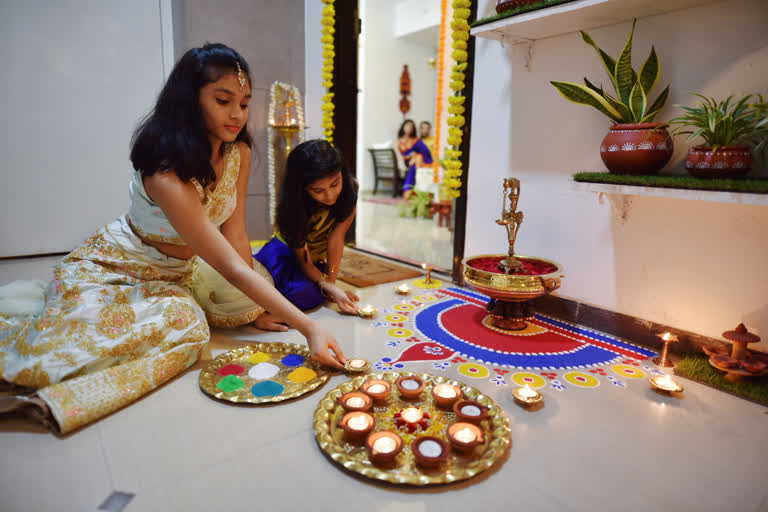Although Diwali is the festival of lights, colours also play an integral part in enriching the festival. Ahead of Diwali devotees spend hours every day to adorn their aangans with elaborate rangolis and also outline it with diyas to create a magical symphony is colours and light. The word Rangoli is coined from two words, "Rang" and "Aavali" which means, a row of colours. Rangoli patterns are usually made using coloured chalk, rice powder, gulal, flowers and crushed limestone. The designs and shapes of rangolis vary from region to region based on beliefs and culture. But, largely, it is believed that rangolis are made to celebrate the homecoming of goddess Lakshmi. According to Hindu mythology, Lakshmi was born on the new moon day in the month of Kartik and this day later went on to be known as Diwali.
It is believed that goddess Lakshmi visits the houses of devotees on the day of Diwali to bless them with prosperity. That’s why people start cleaning their houses days ahead of Diwali and get involved in the beautification of their houses. Legend says that the way to impress the goddess of wealth and prosperity is cleanliness and decoration. Rangoli is an extension of this ritual. However, a rangoli isn’t just meant for beautification, it also is believed to keep the evil and negative energies away from the home. Many draw a lotus pattern by the side of the rangoli to represent the Goddess Lakshmi.
The bright colours of the rangoli and the holy thought with which it is made are believed to spread positivity and cheer in the atmosphere. It is also called a “shagun” in Indian households which means good luck. So the mere presence of rangoli is a symbol of prosperity, luck, and positivity.
The vibrant rangoli colours with a touch of marigold flowers rose petals and mango tree leaves to give your house the festive fervour. You can even decorate the rangoli with lighted diyas. If you are particularly innovative you can give rangolis a unique touch by adding natural colour like colours from flower petals, turmeric, tree barks etc. However, the most common ways are also easily doable ways. You can use coloured rice, dry flour, wet paint, crayons, flowers to fill in patterns made with the help of scales, hoops, etc.
Here are 5 simple designs of rangolis that can light up the house instantly.
- " class="align-text-top noRightClick twitterSection" data="
">
- " class="align-text-top noRightClick twitterSection" data="
">
- " class="align-text-top noRightClick twitterSection" data="
">
- " class="align-text-top noRightClick twitterSection" data="
">
- " class="align-text-top noRightClick twitterSection" data="
">



